В ходе проверки слуха измеряют остроту слуха в правом и левом ухе, чтобы выявить возможные нарушения слуха. Результаты помогут вам и пациенту совместными усилиями определить, будут ли ему полезны слуховые аппараты.
Инструкция
Используйте раздел "Проверка слуха" Формы для проведения оценки и сверьтесь с таблицей "Степени потери слуха", чтобы выяснить, имеется ли у пациента потеря слуха.
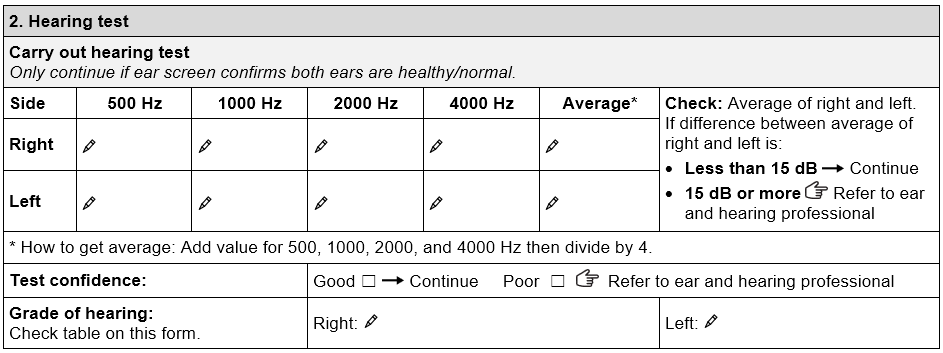
Совет
Следующие рекомендации облегчат речевое общение со слабослышащими людьми:
- Говорите четко и медленно. Не кричите.
- Стойте/сидите при хорошем освещении лицом к собеседнику, чтобы он или она могли видеть ваше лицо, когда вы говорите.
- Не преувеличивайте движения губ. Это может затруднить собеседнику восприятие речи.
- Постарайтесь свести к минимуму фоновый шум, так как он затрудняет восприятие, даже если ваш собеседник пользуется слуховыми аппаратами.
- Если в помещении находится несколько человек, говорите по очереди, а не все одновременно. Так вашему собеседнику будет легче включиться в разговор.
Вопрос
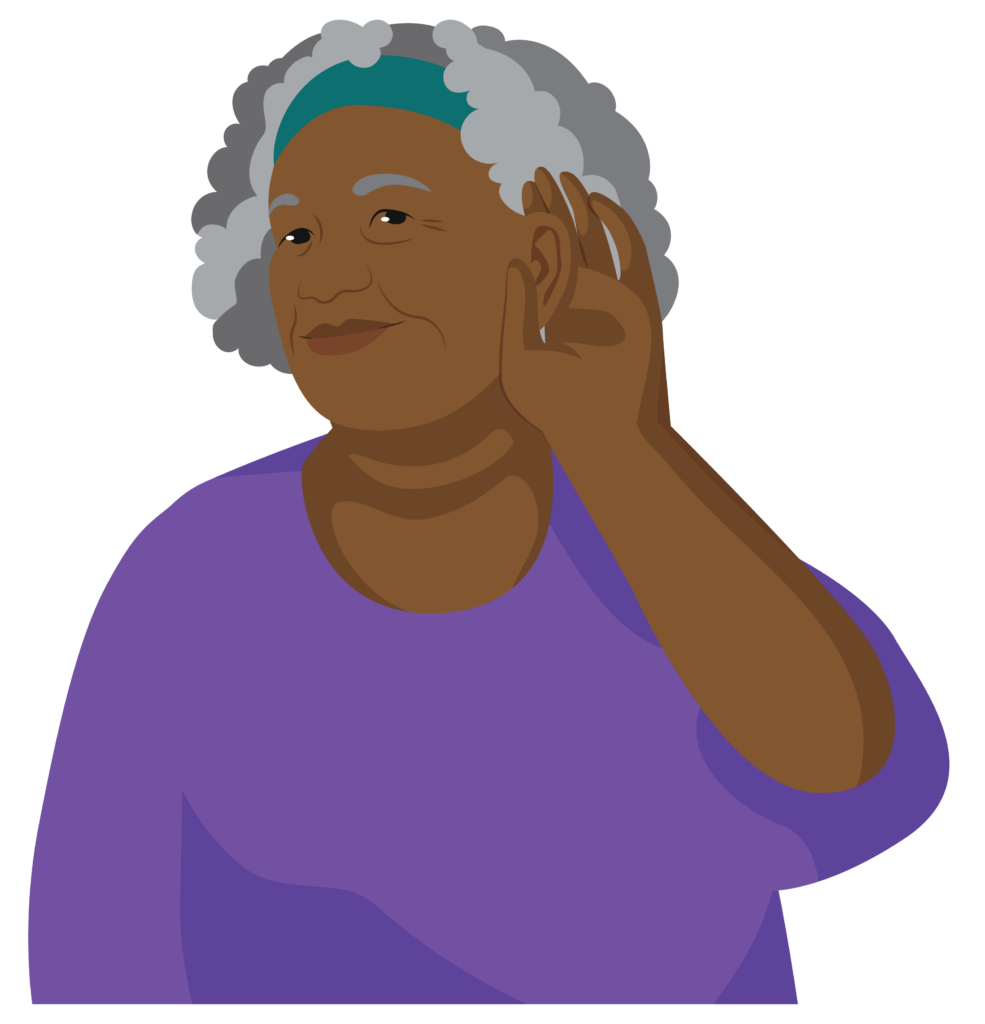
Помните ли вы Малику?
Малике 70 лет, и она плохо слышит.
Во время проверки слуха она постоянно просит медицинского работника повторить то, что он говорит.
Что может сделать медицинский работник, чтобы облегчить Малике общение с ним?
Выберите два варианта ответа.
Если вы выбрали ответы c и d, вы правы!
Если вы повернетесь лицом к Малике при хорошем освещении и будете говорить четко и медленно, ей будет легче понять, что вы говорите.
Всегда проводите проверку здоровья ушей пациента до того, как перейти к проверке слуха.
Если у пациента есть проблемы со здоровьем ушей, это может ухудшить результаты проверки слуха.
Если проблема со здоровьем уха будет устранена заранее, результат проверки слуха будет более точным.
Проведение проверки слуха
При проведении проверки слуха:
- Объясните, как проходит проверка слуха
- Попрактикуйтесь в реагировании на звуки
- Проведите проверку слуха
- Рассчитайте средний порог слышимости
- Задокументируйте результаты по каждому уху.
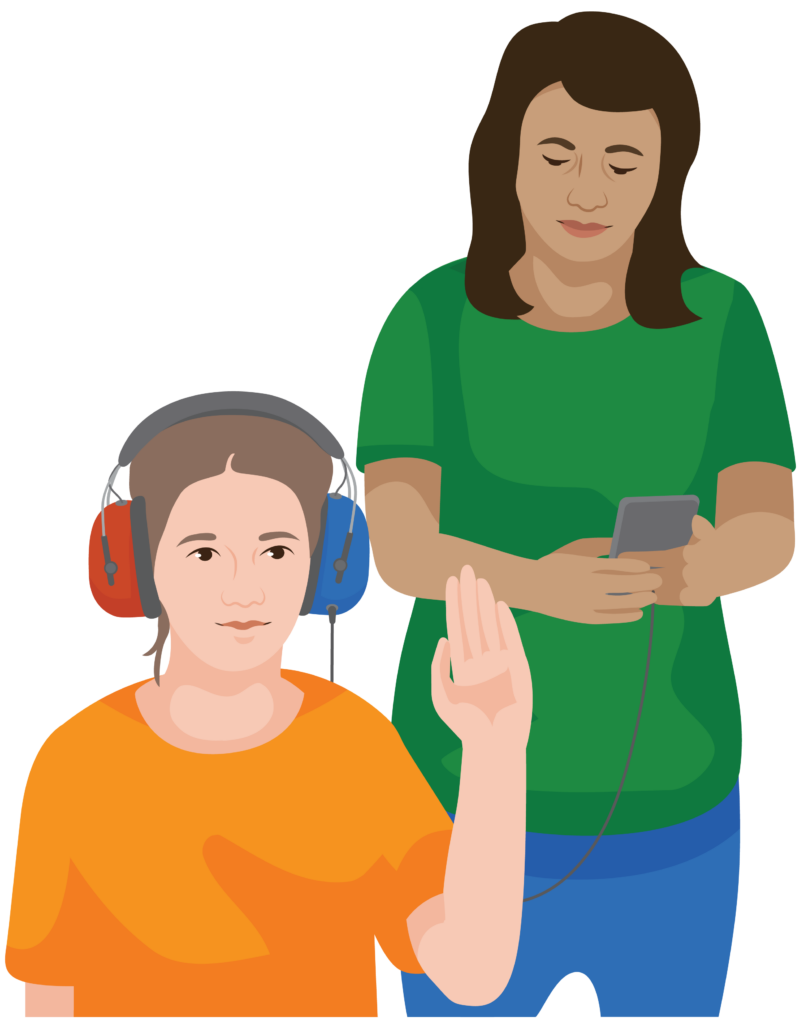
1. Объясните, как проходит проверка слуха
Объясните, что вы проверите слух пациента, определив самый тихий звук, который он сможет расслышать (порог слышимости).
2. Попрактикуйтесь в реагировании на звуки
Поясните:
- Как только вы услышите звук, нажмите на кнопку для реагирования или поднимите руку.
- Отпустите кнопку или опустите руку, как только перестанете слышать звук.
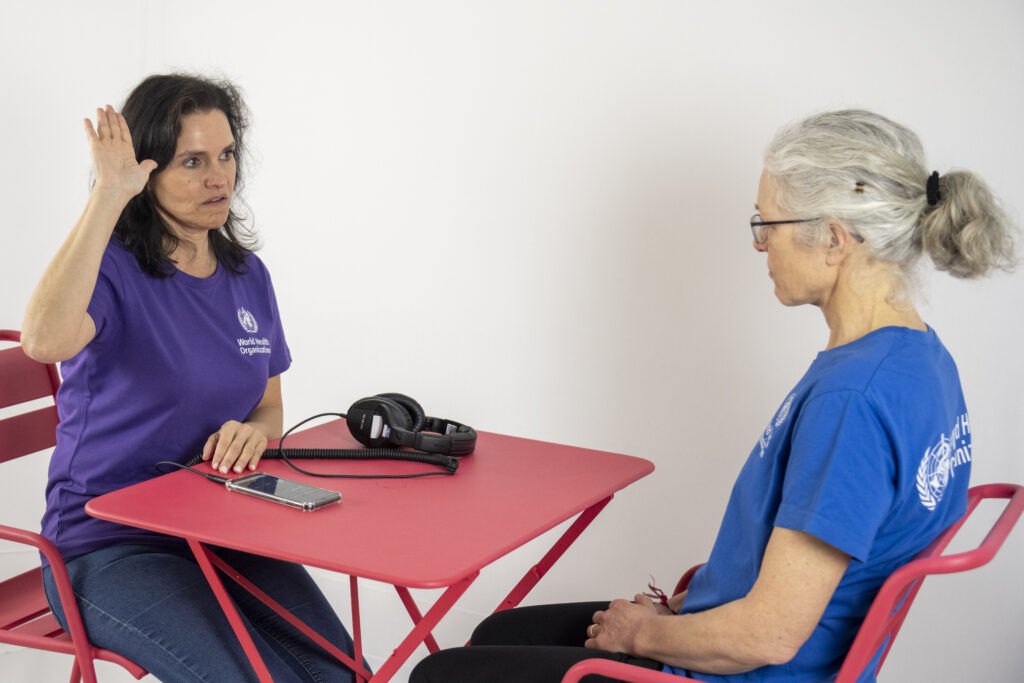
Сначала проведите тренировочную проверку на частоте 1000 Гц при громкости 40 дБ:
- Попросите пациента поднять руку, когда он услышит звук, и опустить ее, когда звук стихнет
- Повторите этот процесс дважды для каждого уха
- Если пациент не слышит тренировочный звук, увеличьте громкость на 10 дБ и повторите.
Инструкция
Если пациент не может успешно пройти тренировочную проверку, не продолжайте проверку слуха. Выдайте направление к специалисту по здоровью слуха и уха.
Прежде чем начать проверку слуха, спросите пациента, нет ли у него ощущения, что одним ухом он слышит лучше, чем другим.
- Начните с того уха, которое слышит лучше.
- Если у пациента нет ощущения, что одним ухом он слышит лучше, чем другим, начните с правого уха.
Вопрос
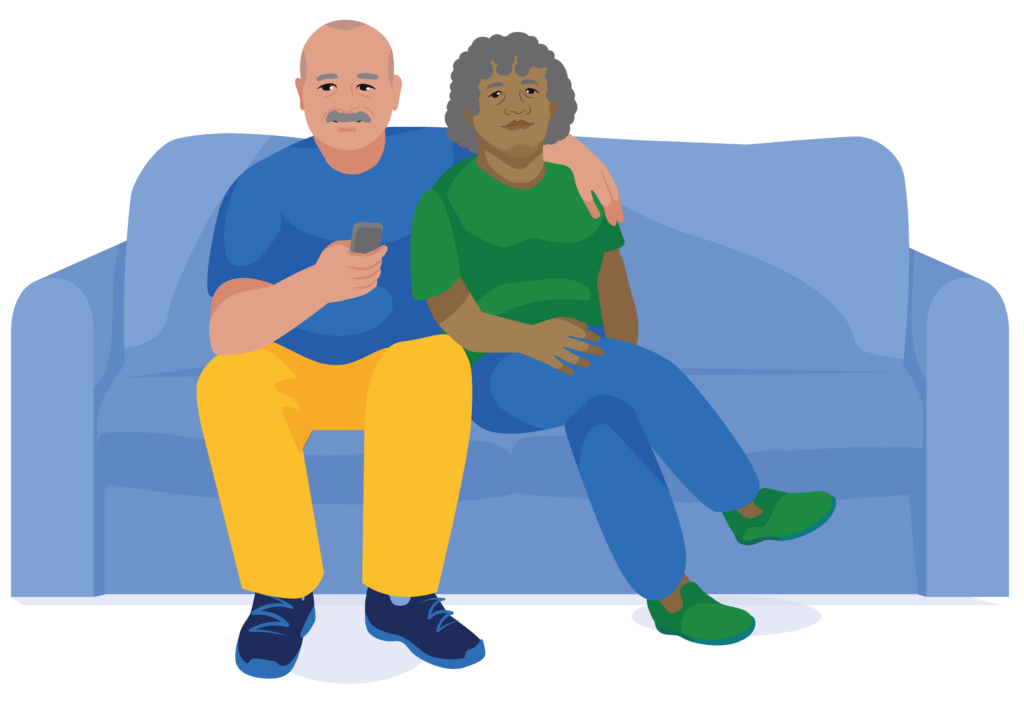
Помните ли вы Джона?
Джон плохо слышит. Он пришел на прием в местную службу здравоохранения, чтобы пройти проверку здоровья слуха и уха.
Медицинский работник спрашивает Джона, каким ухом он лучше слышит. Джон сомневается.
С какого уха медицинский работник должен начать проверку слуха?
Выберите один ответ.
Если вы выбрали ответ b, то вы правы!
Джон не уверен, каким ухом он слышит лучше. Поэтому начните с его правого уха.
Ответы a, c и d неверны.
Если начать с того уха, которое лучше слышит (при условии, что у вас есть такая информация), это может помочь пациенту почувствовать себя увереннее в процессе проверки слуха, так как ему будет легче расслышать проверочные звуки.
3. Проведите проверку слуха
- Попросите пациента надеть наушники с шумоподавлением. Убедитесь, что они надеты правильно.
- Начните проверку с того уха, которым пациент слышит лучше. Если это неизвестно, начните с правого уха.
- Установите частоту звука на 1000 Гц и интенсивность на 40 дБ.
Совет
Чтобы обеспечить более точные результаты проверки слуха:
- Расположитесь так, чтобы пациент не мог вас видеть, когда вы подаете звук.
- Меняйте ритм подачи звуков в наушники. Это нужно для того, чтобы пациент не пытался угадать, когда вы подадите следующий звук.
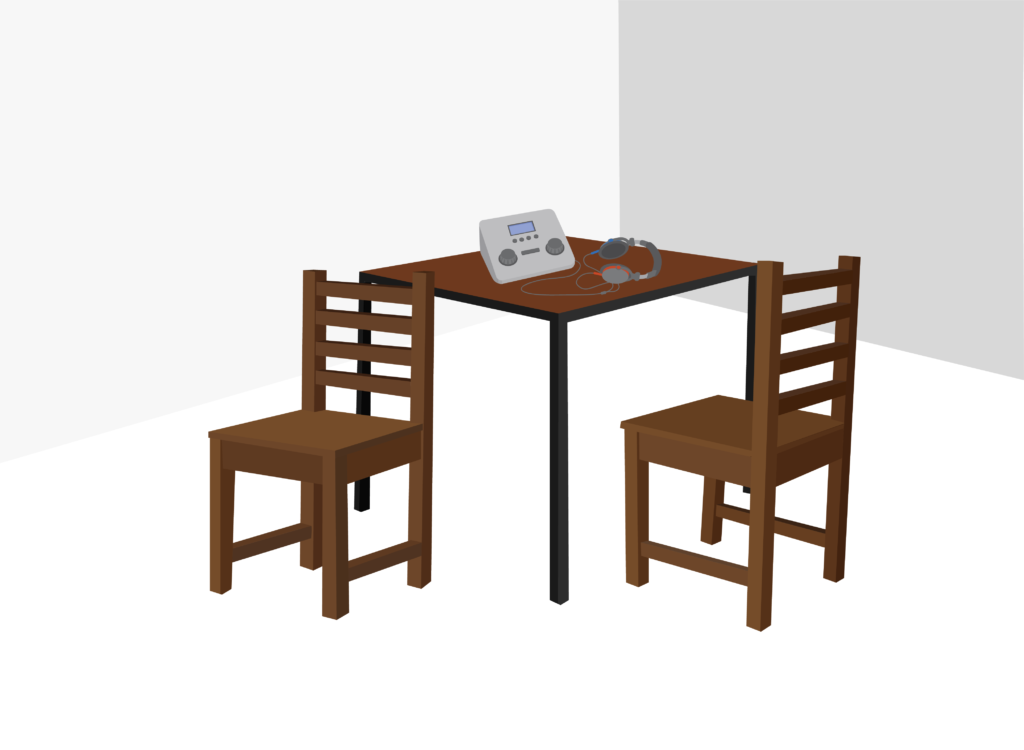
Звуки более высокой частоты (1000 Гц) обычно легче воспринимаются на слух и позволяют пациенту почувствовать себя увереннее в начале проверки слуха.
- Удерживайте нажатую кнопку в течение 2-3 секунд и посмотрите, поднимет ли пациент руку:
- Если пациент поднимает руку, уменьшите уровень интенсивности на 10 дБ.
- Если пациент не реагирует, увеличьте уровень интенсивности на 5 дБ.
- Продолжайте, пока не определите самый тихий звук, который пациент в состоянии расслышать:
- Повторите звук трижды, чтобы подтвердить порог слышимости.
- Если пациент реагирует правильно по крайней мере два раза из трех на данной частоте, запишите полученный порог слышимости в Форму для проведения оценки.
- Повторите тот же процесс на частотах 2000 Гц, 4000 Гц и 500 Гц
- Повторите весь процесс в отношении левого уха пациента.
Инструкция
Посмотрите видеоролик о том, как проводится проверка слуха с помощью аудиометрического приложения на смартфоне.
Вопрос
1. Какой уровень фонового шума приемлем для проверки слуха?
Выберите один ответ.
Правильный ответ ‒ менее 40 дБ!
Уровень шума должен быть менее 40 дБ. Измените обстановку или место проведения проверки слуха, если уровень шума превышает 40 дБ.
2. Если пациент не реагирует на звук во время проверки слуха, какой инструкции вам нужно следовать далее?
Выберите правильный ответ и щелкните, чтобы проверить ответы.
Неверно.
Не следует снижать уровень интенсивности, так как человек все равно не сможет услышать звук.
Верно!
Увеличьте громкость на 5 дБ и посмотрите, отреагирует ли пациент. При наличии реакции повторите этот звук три раза, чтобы убедиться, что вы определили порог слышимости пациента.
Неверно.
Не прекращайте проверку слуха, пока не определите порог слышимости пациента.
Совет
При подаче проверочного звука не отпускайте кнопку слишком быстро. Важно дать пациенту 2-3 секунды, чтобы он мог услышать звук.
Практическое задание
В группах по очереди выступайте в роли сотрудника, проводящего проверку слуха, и пациента.
Подготовьтесь:
- Найдите помещение и измерьте уровень фонового шума, используя измеритель уровня звука или скачанное приложение hearWHO app:
- Нажмите на кнопку "Проверить слух", чтобы получить доступ к измерителю уровня звука
- Подтвердите, что разрешаете приложению измерить шум
- Организуйте проверку слуха таким образом, чтобы пациент не мог вас видеть.
Проведите проверку:
- Поясните, в чем заключается проверка слуха
- Проведите проверку слуха на частотах 1000, 2000, 4000 и 500 Гц для того уха, которым пациент лучше слышит, или для правого уха
- Когда вы достигнете порога слышимости, подайте звук трижды
- Убедитесь, что пациент отреагировал правильно в двух случаях из трех
- Запишите самый тихий звук, который пациент может расслышать
- Повторите весь процесс с другим ухом.
Надежность проверки слуха
Подумайте, насколько вы уверены в результатах проверки слуха.
Вы можете быть уверены в результатах, если пациент:
- последовательно реагирует на предъявляемые звуки
- вам удалось определить порог слышимости применительно к каждой частоте.
Вы можете быть недостаточно уверены или совсем не уверены в результатах теста, если пациент:
- реагирует на предъявляемые звуки бессистемно, случайно
- реагирует даже при отсутствии звука
- реагирует только тогда, когда видит, что сотрудник, проводящий проверку, совершает движения.
В случае, если:
- вы уверены в надежности результатов проверки Продолжайте.
- вы не уверены в надежности результатов проверки Обсудите это со своим наставником. При необходимости направьте пациента на консультацию к специалисту по здоровью слуха и уха.
Внимание
Точность результатов проверки важна для правильного программирования слуховых аппаратов.
4. Рассчитайте средний порог слышимости
- Рассчитайте среднее значение в дБ, сложив пороговые значения на частоте 500 Гц, 1000 Гц, 2000 Гц и 4000 Гц, а затем разделив полученный результат на четыре.
- Сравните среднее пороговое значение для правого и левого уха:
- разница составляет менее 15 дБ Продолжайте
- разница составляет 15 дБ или более Направьте пациента к специалисту по здоровью слуха и уха.
Разница составляет 15 дБ или более
Люди с односторонней потерей слуха и асимметричной потерей слуха ‒ примеры людей, у которых разница между средним порогом слышимости правого и левого уха составляет 15 дБ или более. У таких людей более сложные потребности. Направьте такого пациента на консультацию к специалисту по здоровью уха и слуха.
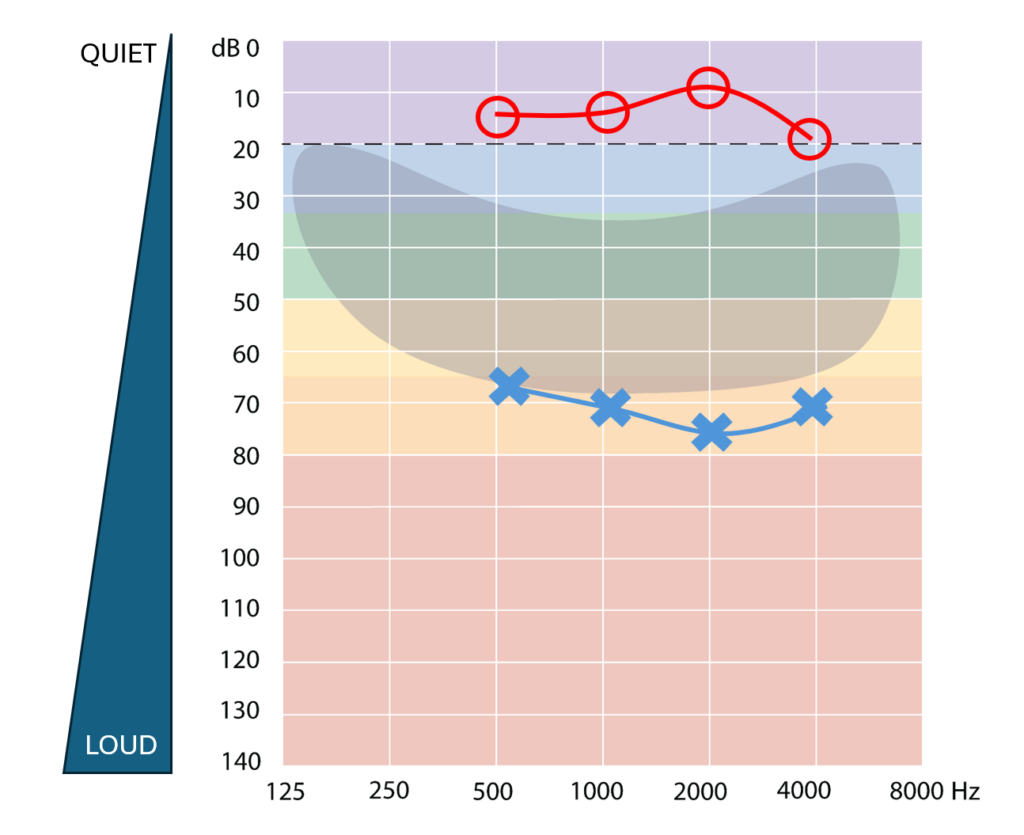
Одно ухо ‒ слух в пределах нормы, в другом ухе отмечается потеря слуха в диапазоне от легкой до глубокой.
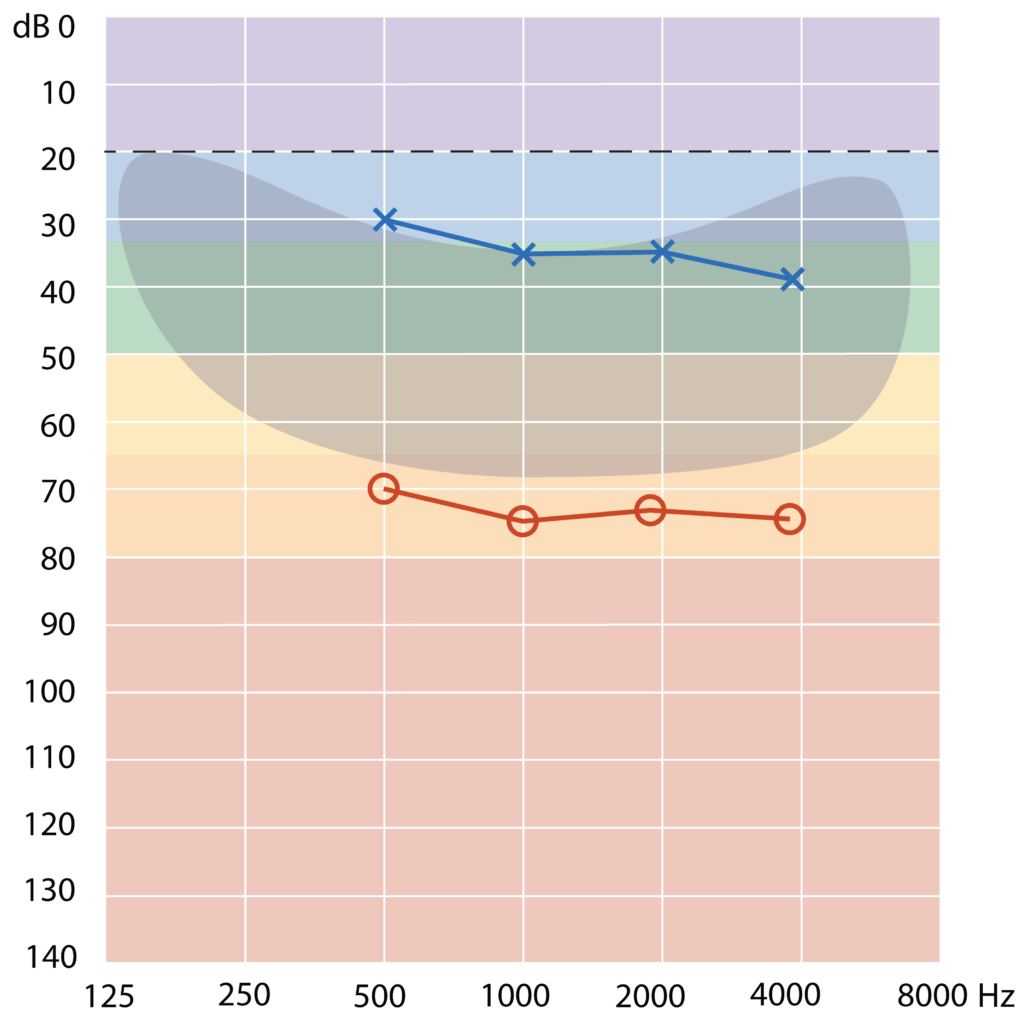
Различные степени потери слуха с разницей более чем 15 дБ между правым и левым ухом.
Вопрос
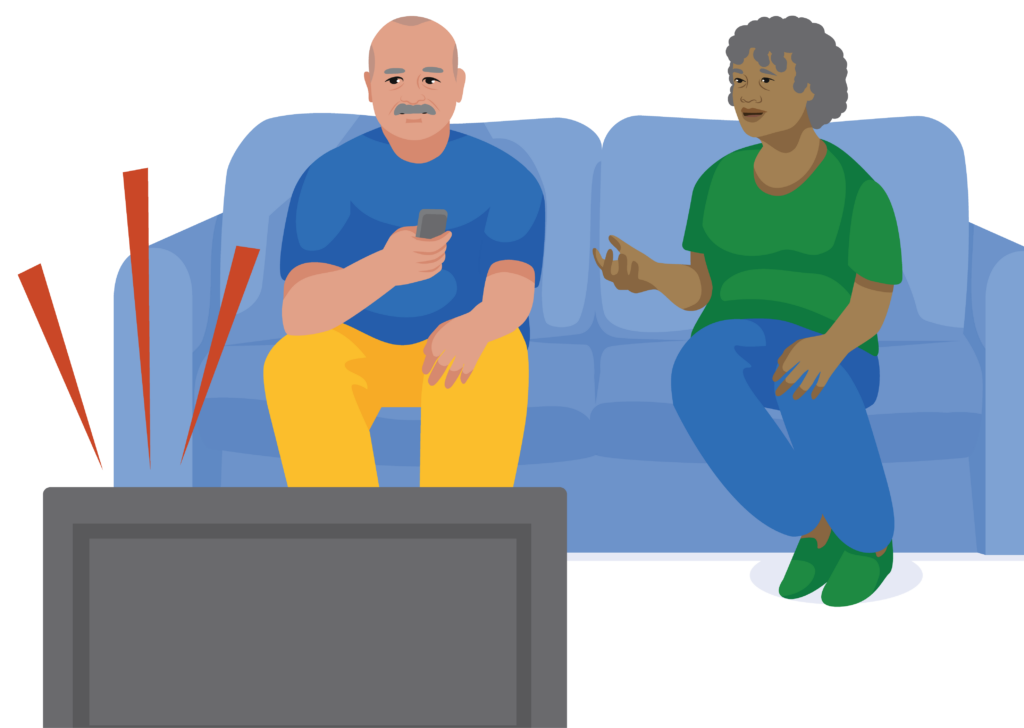
Помните ли вы Джона?
Джон пенсионер, он живет со своей женой Мэри.
Джон обратился в местную службу здравоохранения, чтобы пройти проверку здоровья слуха и уха. Во время проверки он реагировал уверенно.
Посмотрите на пороги слышимости, определенные в отношении каждой частоты:

1. Каков средний порог слышимости для правого уха Джона?
Выберите один ответ.
Правильный ответ ‒ 65 дБ!
Это среднее значение, полученное при сложении всех чисел и делении результата на четыре.
2. Каков средний порог слышимости для левого уха Джона?
Выберите один ответ.
Правильный ответ ‒ 70 дБ!
Это среднее значение, полученное при сложении всех чисел и делении результата на четыре.
3. Верно ли, что разница между правым и левым ухом Джона составляет менее 15 дБ?
Выберите один ответ.
Правильный ответ – "Да"!
Разница составляет менее 15 дБ. Медицинский работник может продолжать оценку потребностей.
Сверьтесь с приведенной ниже таблицей "Степени потери слуха" или с Формой для проведения оценки.
| Степень | Среднее значение |
| В пределах нормы | Среднее значение менее 20 дБ |
| Легкая потеря слуха | Среднее значение 20-34 дБ |
| Умеренная потеря слуха | Среднее значение 35-49 дБ |
| Умеренно тяжелая потеря слуха | Среднее значение 50-64 дБ |
| Тяжелая потеря слуха | Среднее значение 65-79 дБ |
| Глубокая потеря слуха | Среднее значение более 80 дБ |
4. Какова степень потери слуха на правое ухо у Джона?
Выберите один ответ.
Правильный ответ ‒ "Тяжелая потеря слуха"!
Значение 65 дБ находится в диапазоне тяжелой потери слуха.
5. Какова степень потери слуха на левое ухо у Джона?
Выберите один ответ.
Правильный ответ ‒ "Тяжелая потеря слуха"!
Показатель 70 дБ находится в диапазоне тяжелой потери слуха.
5. Задокументируйте результаты по каждому уху
- Запишите средние значения остроты слуха в разделе Формы, посвященном проверке слуха.
- Задокументируйте оценку надежности проверки слуха.
- Запишите степень остроты слуха применительно к правому и левому уху.
Выполните действия, которые рекомендуется предпринять при такой степени потери слуха в соответствии с таблицей "Степени потери слуха".
Помните ли вы Джона?

Медицинский работник сверяется с таблицей "Степени потери слуха".
Джон ‒ взрослый человек с тяжелой потерей слуха на оба уха. Медицинский работник может продолжать оценку на предмет предоставления ему слуховых аппаратов.
Вопрос

Помните ли вы Малику?
Посмотрите на результаты проверки слуха у Малики.

Рассчитайте среднюю потерю слуха для правого и левого уха Малики.
1. Верно ли, что разница между правым и левым ухом Малики меньше 15 дБ?
Выберите один ответ.
Правильный ответ – "Да"!

Медицинский работник может продолжать оценку потребностей.
Сверьтесь с таблицей "Степени потери слуха".
| Степень | Среднее значение |
| В пределах нормы | Среднее значение менее 20 дБ |
| Легкая потеря слуха | Среднее значение 20-34 дБ |
| Умеренная потеря слуха | Среднее значение 35-49 дБ |
| Умеренно тяжелая потеря слуха | Среднее значение 50-64 дБ |
| Тяжелая потеря слуха | Среднее значение 65-79 дБ |
| Глубокая потеря слуха | Среднее значение более 80 дБ |
2. Какова степень потери слуха на правое ухо у Малики?
Выберите один ответ.
Верный ответ ‒ "Умеренно тяжелая потеря слуха"!
Средний порог слышимости для правого уха Малики составляет 50,00 дБ. Умеренно тяжелая потеря слуха определяется в диапазоне 50-64 дБ.
3. Какова степень потери слуха на левое ухо у Малики?
Выберите один ответ.
Верный ответ ‒ "Умеренно тяжелая потеря слуха"!
Средний порог слышимости для левого уха Малики составляет 51,25 дБ. Умеренно тяжелая потеря слуха определяется в диапазоне 50-64 дБ.
Объясните результаты проверки слуха
По завершении проверки слуха и после определения степени потери слуха следует разъяснить пациенту полученные результаты и то, будут ли ему полезны слуховые аппараты.
Помните ли вы Малику?

Проведя проверку слуха, медицинский работник объяснил Малике, что у нее умеренно тяжелая потеря слуха. Это означает, что Малике может быть трудно расслышать слова даже в тихой обстановке.
Использование слуховых аппаратов может облегчить ей общение с родными, особенно во время семейных мероприятий.
Малика подтвердила, что хотела бы пройти обследование, чтобы узнать, помогут ли ей слуховые аппараты.